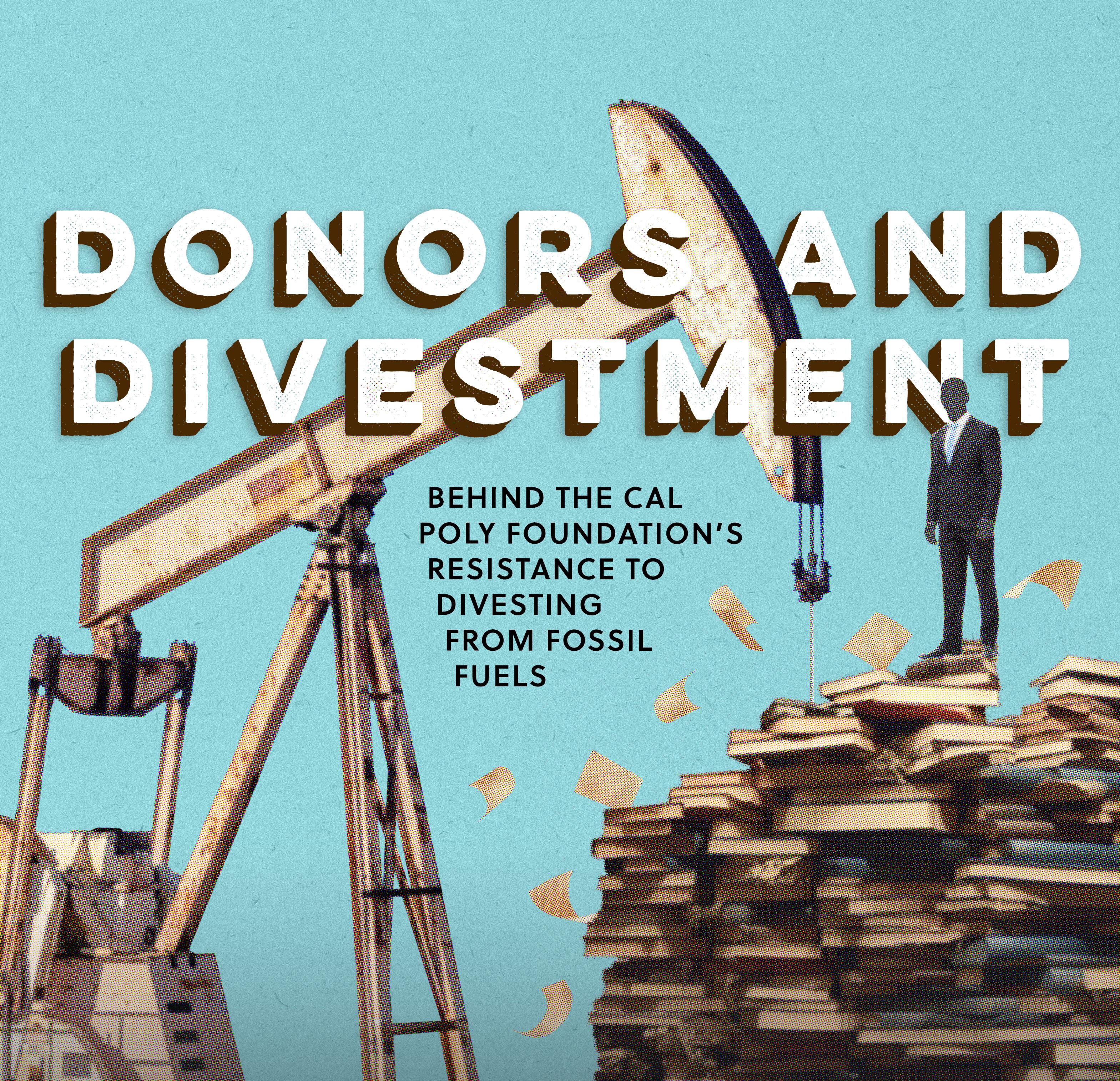
CAL POLY CAT PROGRAM LOOKS FORWARD TO NEW LOCATION
LIBERAL ARTS MEETS ENGINEERING IN ONE OF CAL POLY’S LESSERKNOWN MAJORS
MEET YOUR NEW STUDENT NEWS SOURCE: MAVERICK NEWS
CAL POLY SAN LUIS OBISPO’S NEWS SOURCE APRIL 9, 2024 | MUSTANGNEWS.NET
NEWS
4
MUSTANG
Pg.
Pg. 3
Pg. 9
Lauren Emo Editor
Leila Touati Assistant Editor
Ashley Bolter
Kathryn Clark
Caroline Ohlandt
Abby Gorman
Alex Kohm
Rocco Brichler
Kaitlyn Knopf
Matthew Muren
Zoie Denton Editor
Erin Yarwood
Claudia Muñoz
Liz Nancett
Neta Bar
Tess Whitsett
Matthew Ho Editor
Nate Mills Social Media Director
Jonathan Sze
Noah Greenblatt
Lano Somotun
Sergio Romero
jack bynum
Katie Wright
Jordan Singh
Ty Soria
Dylan Allen
Charlie Wiltsee
Michael Hernandez ARTS & STUDENT LIFE
Riya Parekh Editor
Sydnie Bierma
Carly Heltzel
Katherine Lu
Makayla Khan
Liv Mehran
Maya Ziv
Arabel Meyer
Vinithra Seshan
Bailee Isackson
Teah Swartzon
Krithi Sankar
Makena Locsin
Claire Lorimor Creative Director
Ariel Sherman
Angel Gaytan
Deanna Nguyen
Alejandro Rearte
Liz Ridley
Brandon Schwartz
Rain Mazumder
Tayler Kang
Kennedy Ray
Aviv Kesar
Maya Rotstein VIDEO
Ari Lopez Video Manager
Cassandra Garcia
Mckenna Rodriguez
Madison Vernon
Natalie Levesque
Izzy Romero
Samuel Hronek
RJ Pollock
Lily Tenner Editor
Shae Ashamalla
Bobby Groth
Owen Roberts
Ashley Spinoglio
Annabelle Fagans
Mia-Isobel Craig
Brandon Bomberger
Maura Shernisky
Visruth Srimath Kandali
Juliete Seo
Alice Sukhostavskiy SOCIAL MEDIA
Jessa Rosenthal Social Media Manager
Angela Passalacqua
Josie Wall
Avery Smigel
Lily Rivas
Tori Gordon
Sophia Pattison
DATA & INVESTIGATIONS
Elizabeth Wilson Editor
Archana Pisupati
Cole Pressler
Krithi Sankar
Amelia Wu
Naomi Vanderlip
Jeremy Garza
Masato Nandate
Brandon Kim
Tejasree Kandibanda BILINGUAL
Edgar Bustillos Morales Editor
Emilia Pirir
Isabel Cruz Santiago
Jazmin Zarate
Kate McHugh KCPR LEADERSHIP
Trevor Baumgardner
Natalie Levesque
Aidan Dillon
Layla Shuman
Izzy Romero
Mckenna Rodriguez
Jazmyn Chavez
Jada Griffith
Emma Montalbano
Fiona Hastings
Kat Orozco
Jessica Carp
Cole Pressler
Sergio Romero
Nate Mills
Mark Robinson
Riley Sullivan
Ryan Giacomini
KCPR CONTENT
Emily Tobiason Content Director
Amelia Nored Editorial Assistant
Alina Jafri
Angie Stevens
Emma Hughes
Fiona Hastings


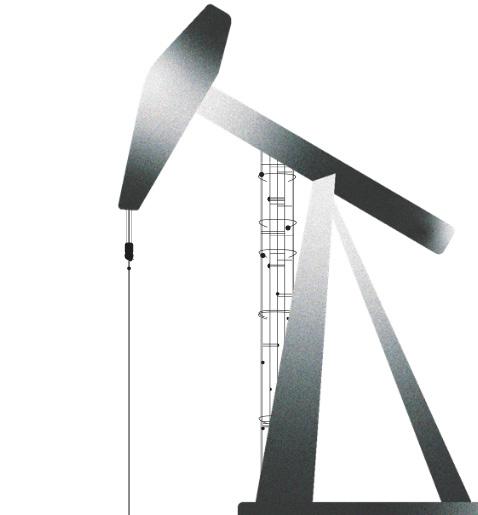


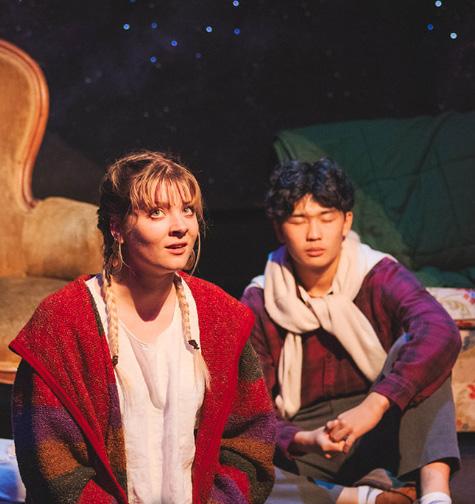
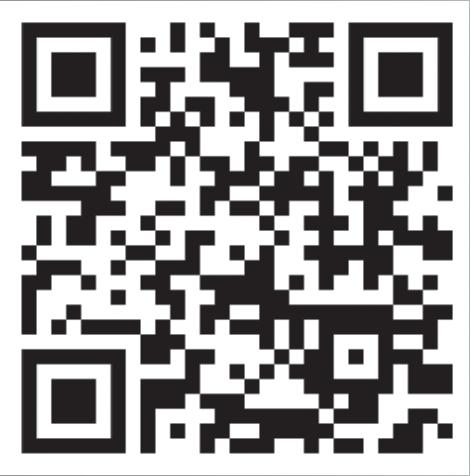
FROM IMMERSIVE VR TO FRIENDLY ROBOTS – LIBERAL ARTS MEETS ENGINEERING AT CAL POLY
A SANCTUARY: NEW LOCATION CREATES OPPORTUNITY FOR THE CAL POLY CAT PROGRAM
CREATING
NEWS
OPINION
SPORTS
DESIGN
PHOTO
Emily Tobiason Content Director
News
Jordan Triebel KCPR
Director
Music Director
Cindy Nguyen Art Director Cayley O’Brien Programming/
David Aronson Marketing Director
Manager
Sam Kohn Podcast
Reilly Yuen Social Media Manager KCPR NEWS
Jordan Triebel Director
Emmy Burrus Assistant Director
Sarina Grossi
Haley Ellis Kat Orozco Lulu David Natasha Malinovsky Olive Nelson Sydney Osterbauer MMG BUSINESS ADVERTISING & PR Matthew Ho & Yuka Shindo Advertising Team Managers Trevor Baumgardner Special Sections Editor Katharine Smith Marketing and Public Relations Director Adrienne Liang Advertising Design Manager McKenna Hauteman OnCampus Events Coordinator Mackenzie Ryseff Marketing/PR Researcher ADVERTISING DESIGNERS Tristan Naoe Amanda Wahl Jenna Yost ADVERTISING ACCOUNT EXECUTIVES Ruby Beye Ella Brees Emma James Alexander Poroy Juliet Sasaura Amanda Tahi SPECIAL SECTIONS WRITERS Xiomara Lopez Tori Gordon LEADERSHIP Chloe Lovejoy Editor in Chief MUSTANG NEWS TUESDAY, APRIL 9, 2024 UPFRONT 2 Cal Poly is in tiłhini, the Place of the Full Moon. We gratefully acknowledge, respect, and thank yakʔit yu tit yu yak tiłhini, Northern Chumash Tribe of San Luis Obispo County and Region, in whose homelands we are guests. IN THIS ISSUE Emma Robertson Managing Editor Claire Lorimor Creative Director Ari Lopez MNTV News Director Sarina Grossi Digital Director 03 STORY BY Kaitlyn Knopf DESIGNED BY Claire Lorimor 04 STORY BY Emmy Scherer DESIGNED BY Alejandro Rearte 06 10 WHY WON’T CAL POLY PULL ITS INVESTMENTS FROM FOSSIL FUELS? MAVERICK NEWS: TWO BROTHERS TAKE ON SATIRIZING CAL POLY A YEAR IN THE MAKING: HOW A STUDENT-DIRECTED PRODUCTION MADE IT TO THE STAGE STORY BY Owen Lavine DESIGNED BY Aviv Kesar STORY BY Kate Lowpensky DESIGNED BY Maya Rotstein STORY BY Ashley Bolter DESIGNED BY Kennedy Ray MUSTANG NEWS ADVISERS Jon Schlitt General Manager Pat Howe Editorial Adviser Kim Bisheff Digital Adviser Patti Piburn KCPR Adviser Brady Teufel Department Chair Richard Gearhart MNTV Adviser Stay Connected! Subscribe to the Roundup Newsletter! 09

Creating a sanctuary New location creates opportunity for the Cal Poly Cat Program
BY KAITLYN KNOPF
The Cal Poly Cat Program is tentatively set to move to the Avila Ranch House by the end of April. Their current location, where they have been located for over 30 years, is being taken over to expand the Cal Poly Technology Park, according to Cat Program Faculty Advisor Damon Watkins.
The program is a sanctuary for cats to help control the feral cat population in San Luis Obispo, and originally started as a Trap Neuter Release (TNR) program in 1992, but evolved into a shelter according to Cal Poly Cat Program president Natalie Siler. “We’ve been increasing what we do. Currently, we have about 65 cats in our program,” Siler said. “Anything we can do to help the local community with cats.”
According to Watkins, the new space will greatly benefit the cats, staff and students. The new location is behind a coded gate, making it safer for students to volunteer in the evening.
“It’s a way better space for the cats in general. It’s also spectacularly beautiful up there,” Watkins said.
The goal for the Cat Program is to transition into a sanctuary.

“It won’t just be a shelter, we’re trying to create a sanctuary,” Watkins said. “So it’s a place where students can come and hang out if they just want to hang with the cats, study… We really want to make this a community space for people.”
The combination of a better space for the animals, more secure for our students and community members and then just the opportunity to have more space to actually utilize for the program as a whole.
DAMON WATKINS Cat Program Faculty Advisor

The new location, previously a residential space, will offer a larger layout including a kitchen and bathroom connected to the shelter and an outdoor area three times larger than their current space.
“Having more of a house-style setup with the kitchen and a bathroom will be a lot more helpful for us with bathing cats and doing different types of medications because we’ll have a whole extra space that’s separate from our main shelter area,” recreation parks and tourism senior treasurer and fundraising coordinator Mimi Raytis said.
Currently, the biggest challenge the Cat Program is facing is waiting for the space to be ready for move-in.
Their initial move was set for Jan. 1, which has now been set back to the end of April due to renovations and past structural damage.
Watkins’ primary role in assisting the move is maintaining the lines of communication between different entities on campus to ensure that there is funding being put toward assisting the move. Due to the program being volunteer-based, all money donated goes directly to the cats.
“As the pledge comes in dedicated to the cats, I cannot take that money and spend it on anything else but the cats and so right it’s working with campus and facilities to get them to understand that we need this all done so that we can move in and we’re not paying for it,” Watkins said.
At their current location, the Cat Program has been cleaning up the old shelter. Volunteer Coordinator Meili Laiho worked with volunteer
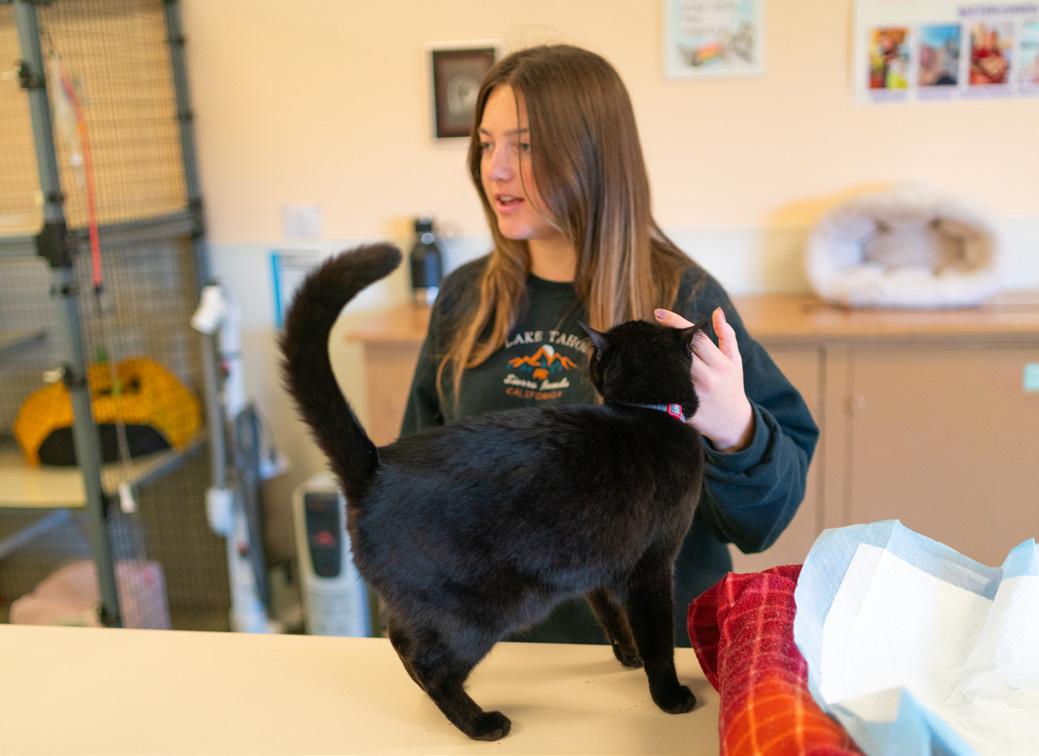
groups to make sure the program was prepared for the move.
“We have done a bunch of different tasks like inventory, just to see what we have that we’re going to need to buy,” she said. “Then we’ve been doing a lot of cleaning so kind of just deep cleaning up the old shelter and then deep cleaning the new shelter.”
According to Laiho, the Cat Program facilities managers have been focusing on cleaning up the new shelter by landscaping and cleaning out the overall building by getting rid of old items.
Laiho is most excited about the additional space once moved into the new location.
“I know at the current shelter there are definitely some tight spaces,” she said. “I would ideally be able to kind of expand those spaces a little bit just so we can more effectively work there.”
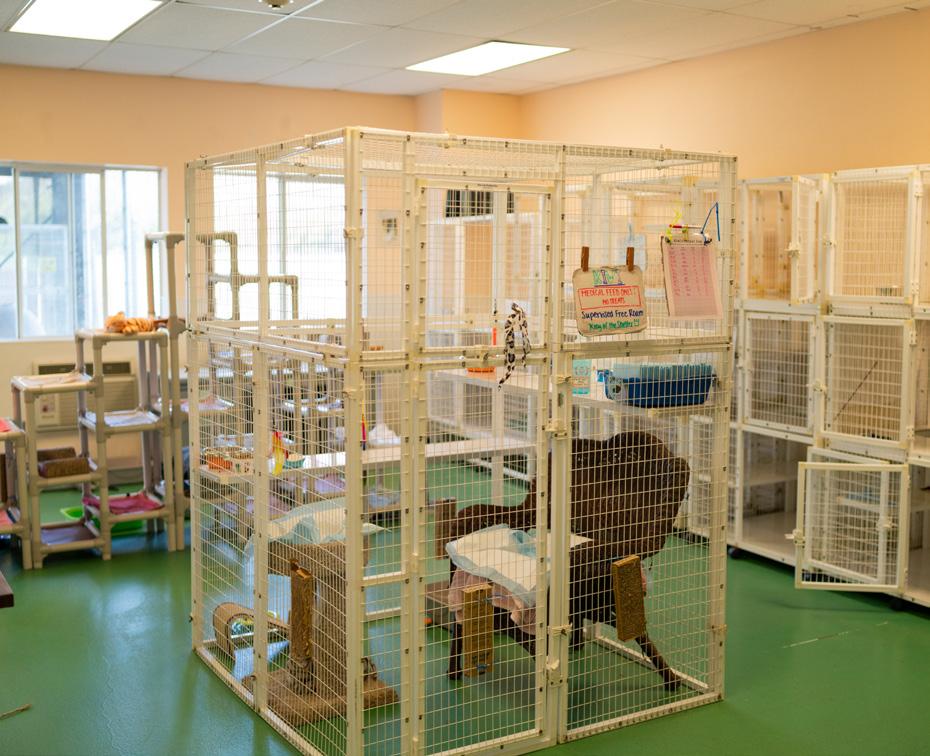
MUSTANG NEWS TUESDAY, APRIL 9, 2024 NEWS 3
ALICE SUKHOSTAVSKIY | MUSTANG NEWS Prescott, a Cal Poly Cat Program resident.
Marmalade, a Cal Poly Cat Program resident.
ALICE SUKHOSTAVSKIY | MUSTANG NEWS Current center overlooking fields near wine and vit area. Current indoor housing for resident cats. Trap, neuter, release coordinator Avery Schurhoff working with cat.
From immersive VR to friendly robots – liberal arts meets engineering at Cal Poly
BY EMMY SCHERER
A chase has begun. Dust begins to fly.
Veering off to the right and picking up speed, the dark blue work truck rips across a lush, green cornfield, plowing down any stalk in its path. The side windows are almost entirely obstructed by the corn stalks whipping against them, with just glimmers of sunlight flickering through.
“You could feel the corn coming around the side of you as the truck is hitting them,” Nathan Gollay, a senior liberal arts and engineering studies (LAES) major, recalled.
The surveillance drone that just soared overhead is almost within reach. The truck goes faster. The music grows louder. Sound is coming from every direction.
‘You could feel the music in your chest,” Gollay said.
The truck emerges from the field and crashes through a chained gate, almost catching up to the drone.
It’s so close; it just needs to go a little bit further.
Then, the truck slams abruptly on its brakes, sending a cloud of dust
through the air. The projector turned off, the screen went white and the lights turned back on.
Gollay sat by himself in the center of the Expressive Technology (ET) Studio on a Thursday night in awe of what he had just experienced. He was only supposed to briefly test the sound and visuals for a movie showing the following night in the studio, but he simply couldn’t turn the system off. He just experienced the immersive 3D sound of the movie “Interstellar” for the very first time.
LAES is a program that, as the name implies, offers a Bachelor of Science degree that allows students to combine a concentration in liberal arts with a concentration in engineering. LAES is a good home for anyone who wants to design their own curriculum and study a specialized field, according to Gollay.
“I think it’s suited well for people who kind of want to do something out of the box,” Sophia Kutch, a senior LAES major, said.
The catch? According to Gollay, no one really knows the major exists.
Nor, he continued, are people
aware of one of the “coolest spots on campus” – the Jack and Felicia Cashin Expressive Technology
Studio. Located on the first floor of the Frost Center (building 181), the ET Studio is the hub for many LAES projects.
Soundproofing covers the ET studio from top to bottom, with 32 speakers lining its perimeter. When the doors to the studio are shut, “the room is quiet enough that you can almost hear your own heartbeat,” according to the College of Liberal Arts website.
This setup offers an immersive audio and storytelling experience where the sound can move linearly from one part of the room to another, according to Gollay.
At the heart of the studio is a state-of-the-art 4k Barco 3D projector, which, according to Gollay, was previously owned by the CEO of Disney, Bob Iger. Paired with a 20-foot projector screen and the Dolby Atmos sound system, the room competes with a real movie theater experience.
Sound is basically the intuition behind this room,” Gollay said.


According to Gollay, if a movie is shown in the proper format, it “should sound exactly how it was produced.”
“It won’t sound like a home theater. It should sound like you were in Disney Studios,” Gollay said.
Beyond that, the studio features a Hollywood-approved mixing station, multiple VR bays, motion capture suits, and a plethora of other technology and camera gear – much of it thanks to the principal donors, Jack and Felicia Cashin. Robots can also be found in the studio, with F.R.I.D.A. (Friendly Reprogrammed Imperial Droid Assistant) being one of the most notable.
From an international escape room to a solar-powered electric bicycle, LAES students are always busy with eclectic projects that blend engineering and the arts together.
One of the latest projects to come out of the program is “Ocean Sight One,” an immersive walkthrough experience using virtual reality (VR) technology. The project brings attention to the abandoned oil rigs off California’s coast that are threatening marine life through a VR underwater diving experience.
LAES Co-Director Dr. Michael Haungs said that the major is important because it addresses a “gray area” between the fields of art and science.
“It just really became crystal clear to me that we tend to think of occupations as these black-and-white things,” Haungs said. “But there’s so much gray in between. And that’s where [LAES] lives.”
We have a ton of cool technology here for all of our weird little projects.
NATHAN GOLLAY Liberal arts and engineering studies (LAES) senior
In an article, LAES Co-Director David Gillette described LAES as a way for “students to see engineering, the sciences, and humanistic study as interconnected and as equally necessary for solving our planet’s most important problems.”
According to the same article, Gillette and former Co-Director Jane Lehr first created the LAES degree to address the approximately 30% of engineering first-year students who
MUSTANG NEWS TUESDAY, APRIL 9, 2024 STUDENT LIFE 4
EMMY SCHERER | MUSTANG NEWS 3D glasses in front of the projector screen in the Expressive Technology Studio.
EMMY SCHERER | MUSTANG NEWS
Nathan Gollay enters the control room of the Expressive Technology Studio.

transfer to non-engineering-related majors due to a lack of flexibility and interdisciplinary study.
For students like Gollay, LAES offers a solution for those passionate about a specific career path that may exist outside of other predefined areas of study, which in his case is “AI” or Artificial Intelligence.
LAES students can choose from several pre-set concentrations for both the liberal arts and engineering
aspects of their degree. However, if a pre-set concentration doesn’t align with their intended career path, the students can alternatively create an “individualized course of study” in which they can specifically tailor classes to develop a concentration that would be better suited for them, according to the LAES website.
According to Gollay, LAES is best suited for those seeking higher education but can’t find the right
major that fits their needs.
“I just call it the make-your-ownmajor program,” he said.
Gollay has created two individualized courses of study for his major: “machine learning” on the engineering side and “ethics and technology” on the liberal arts side. He is also pursuing three minors in computer science, math and philosophy.
According to Gollay, he is likely headed into the field of computer


vision, which he describes as “object tracking with cameras.” Ultimately, though, Gollay shared that he hopes to start his own business in the future.
Animatronics, audio engineering, game design, UI/UX design and film/television production are just a few of the diverse career fields LAES graduates can prosper in, according to the program’s website.
LAES is attuned to helping students become valuable assets in the workplace, and alums have already received high praise for their flexibility and preparedness for work, according to Haungs’ research.
“Usually, when one [LAES] student makes it into a company, they look around and say, ‘Can we have more of those?’” Haungs said.
Despite the program’s benefits, though, LAES continues to fly under the radar.
“The main way students hear about the program is by word of mouth,” Haungs said.
“It’s not really an advertised major. You kind of have to find it on your own a little bit,” Gollay said.
According to Haungs, there are only around 55 students in the LAES program. When asked if he’d like to expand the program, Haungs said “[he] would grow it as large as it could be,” but noted the program’s limited staff as part of the cause for the major’s small size.
The program only has three dedicated staff members: Gillette, Haungs and program coordinator Luna Larsen. Two additional College of Liberal Arts advisors assist with LAES advising, but that’s the extent of the program’s staffing. Both co-directors also teach courses outside of LAES, so “there’s only so much that [they] can do,” according to Larsen.
“We’re always stretching ourselves to the projects we take on to make
sure we provide enough variety for the [LAES] students who have different interests,” Haungs said.
Another reason why LAES may remain under the radar is its required transfer process, according to Kutch. Students must transfer into the major after at least a year of attending the school, as per the LAES website, meaning students don’t often hear about the program before arriving on campus.
The transfer is a necessary step, according to Haungs, as the program’s “extra level of flexibility” requires a clear vision of the student’s chosen career path, something an incoming first-year may not be prepared for.
As for now, Gollay hopes to bring more interest to the major through LAES club events. As the president of the LAES club, he previewed some upcoming events, which included a meet-up to work on F.R.I.D.A.’s animatronics.
In addition, the next movie night is already in the works. Gollay shared that the next pick will be a Star Wars movie to show off the studio’s linear sound mapping capabilities.
As for the “Interstellar” showing, Gollay said it was a success. He noted how the sound experience made the movie-watching experience great and said there was “nothing you can really do to make it better.”
“People laughed, people cried,” Gollay said. “And a few people joined the LAES club.”
Gollay emphasized that everyone is encouraged to participate in all LAES club events regardless of their major and hopes people will stop by to learn more about the program.
“LAES is a good home for those with either an engineering mind or a creative mind,” Gollay said. “But it’s best fit for those who have both.”
MUSTANG NEWS TUESDAY, APRIL 9, 2024 STUDENT LIFE 5
The Friendly Reprogrammed Imperial Droid Assistant, better known as F.R.I.D.A.
The projector screen in the Expressive Technology Studio.
The “Interstellar” movie hard drive.




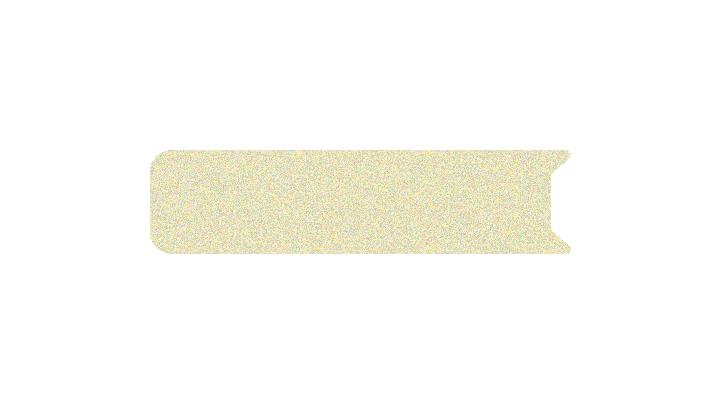

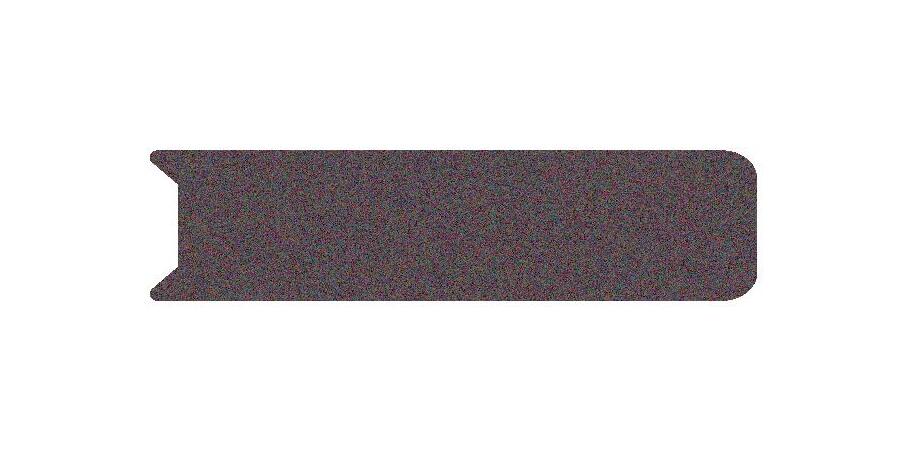



Why won’t Cal Poly pull its investments from fossil fuels?




















 BY OWEN LAVINE
BY OWEN LAVINE


Miranda Mills graduated from Cal Poly in the spring of 2017 with a degree in architecture. Some years later she ended up at a construction company doing project management.
Mills’ enrolled in Professor Jonathan Reich’s EDES 408, Implementing Sustainable Principles, in her final quarter at Cal Poly. The class’s final project asks students to find ways to “implement sustainability principles” at Cal Poly, according to Reich.



“Construction is incredibly slow to change,” Mills said of her industry.


“What kind of importance do we put on sustainable construction? There’s almost none.”
Mills said she was raised with the notion that climate change was her generation’s problem, butting in its ugly head to constantly remind her of its looming and present atrocities.
“Me and my roommates, who all took the class, called it ‘sad class,’” Mills said, joking that Prof. Reich would probably hate hearing her call it that. “The problems of climate change are too big for any one person to really feel like they can make a difference.”
Reich pitched a project idea to Mills and some of her classmates – to
HILL
THE


pressure the Cal Poly Foundation to divest its portfolio from fossil fuels.
The Cal Poly Foundation maintains the school’s endowment and supports university activities, according to its articles of incorporation. Between 2012 and 2020, 17 of Cal Poly’s donors gave a combined $406 million to the Foundation, according to a presentation created by the university.
As of Dec. 31, 2023, the Foundation held a $277 million endowment.
Most of the money is held in mutual funds, 11 of them maintaining exposure to the fossil fuel industry, equating to $16 million in fossil fuel investments, according to calculations done by FossilFreeFunds.org.
Mills and a group of six other students had five weeks before presenting to the Cal Poly Foundation board on May 6, 2017.
During the quarter, Mills and her colleagues would compile a 19-page document on how Cal Poly could achieve a sustainable investment portfolio. Their main goal – the establishment of a Committee on Investor Responsibility, mandating sustainable investment practices and pushing the school to divest away from fossil fuels, according to Mills.
The committee would weigh in on investment decisions along with the board members to ensure that the foundation is investing along Environmental, Social and Governance principles (ESG). ESG investment guidelines and funds require investors to avoid investments in fossil fuels, companies with corruption issues, child and slave labor, companies with pollution issues, companies that engage in illegal labor or financial practices and so forth.
Mills added that adopting these measures would get Cal Poly closer to achieving the coveted Platinum rating from the Association for the Advancement of Sustainability in Higher Education Sustainability Tracking, Assessment & Rating System (AASHE STARS). AASHE STARS ratings are the standard of sustainability ratings across higher education institutions and are rated on a scale of Bronze, Silver, Gold and Platinum ratings, Platinum being the highest and Bronze being the lowest.



Days before the meeting, Professor Matt Ritter, who sat on the board at the time, gave Mills and her colleagues the rundown on how the meetings worked and the demographics of the Foundation, according to Mills. Ritter told them many of the Foundation’s board members have a background in agriculture, engineering and other industries that could be affected by divestment, according to Mills. Ritter did not respond to Mustang News for comment on this story.
Unperturbed, Mills and her group readied themselves for their presentation.
“It was early in the morning [Saturday],” Mills said. “We had all dressed up, we looked like students going to interviews.”
The crew assembled in front of Building 104, the Advanced Technologies Laboratories, their excitement and anxiety bubbling as a chauffeur led them into the Foundation’s meeting room, Mills recalled.
Mills described the room similar to sitting in front of Congress for a hearing. The heads of the Foundation sat above her group in an oval.

I don’t think we realized at the time how much backlash we were going to get at that meeting.


MIRANDA MILLS Cal Poly architecture alumnus
“We were all nervous,” Mills said. Mills and her colleagues were signaled to begin. One at a time, they stood up presenting the various ways in which the Foundation could invest sustainably and establish more over sight over their investing practices. She remembered it being a good presentation. They had spent all quarter practicing their presentation in class — laboring over every line.
Mills remembered a few board members commending the group for their tenacity and depth of research, but the critiques quickly followed.
“They weren’t keen on divestment,” Mills said. Some of the board members insisted Cal Poly was an engineering and agriculture school; it was heavily intertwined with “the companies and the processes that you’re trying to divest from,” Mills recalled.
Divestment was off the table.
“It’s our job to maintain these healthy relationships with these companies for student success in their career,” Mills recalled many of the board members articulating to the group.
A few days later, they received an email to meet with President Armstrong, who was not in attendance at their initial presentation.
On June 1, they gave their presentation to the audience of President Armstrong and Executive Director of Facilities Operations Dennis Elliot.
“I remember [Armstrong] tried to say something like, ‘You know, I’ve made a point in my career of standing















up for environmental justice’ and Miranda said ‘Yes – and we’re asking [you] to do that again,’” Luis Wiley, an architecture junior at the time and a member of Mills’ group, recalled. Mills said she doesn’t recall that exchange specifically but said it fit the general milieu of Armstrong’s comments during the meeting. Reich noted the exchange in a follow-up email to the group after the meeting. Wiley, Reich and Mills all felt Armstrong patronized their group and didn’t expect them to be as well-researched as they were. The group was told not to attend the upcoming Foundation meeting in August 2017, yet some members went, according to Reich. Their push for divestment was dead in the water.
“I was trying to get the other group members to start organizing,” Wiley said.
But his calls were ignored for many reasons, mainly being that a majority of the group’s members were gradu ating and the quarter was coming to an end.
Reich was not surprised to learn that the group did not move the

MUSTANG NEWS TUESDAY, APRIL 9, 2024 THE HILL 7
needle on divestment. He recalled an incident during Warren Baker’s tenure as Cal Poly President when Harris Ranch threatened to pull its funding for a new meat processing facility if the school did not allow a meat industry representative to be present at Dr. Michael Pollan’s talk on the effects of factory farming, as previously reported by The New Times.
“University administrators are so hurting for money that you put a little bit of money on the table and they’ll just about do anything for you,” Reich said.
Mustang News was unable to obtain a full list of Cal Poly’s major donors due to anonymity laws, but many are listed on promotional documents or have made their donations public.




Austin Hearst of the Hearst family fortune; William Frost, founder of Chemlogics – a fracking liquids company; Bill Swanson, former CEO of Raytheon Technologies; Peter Oppenheimer, former CEO of Apple and current Goldman Sachs board member; Richard Stollmeyer, billionaire and former CEO of Mindbody; and Abdul Aziz Al-Ghurair, billionaire Emirati businessman, Emirati Royalty and owner of materials and petroleum firm Al-Ghurair Industries are all listed in the major gifts and lead donors section of a university produced presentation.
University documents illustrate a similar dynamic between donors and the Cal Poly Foundation, hereinafter referred to as the Foundation. Former foundation financial director Bob Wacker noted that a fossil fuel-free investment option could be provided at the “request of a donor” in an August 2017 Foundation meeting.
The Foundation’s objections to divestment have also been noted in










their 2019 STARS submission. In the school’s submission, Cal Poly called divestment “reactionary” and said other California State Universities (CSUs) “have taken a more proactive approach to sustainable investing,” although the university did not elaborate on what that meant. Furthermore, the school has no policy on investing in fossil fuels, according to President Armstrong.
UniversitySustainability
Coordinator Kylee Singh further stated that “[Armstrong] is aware that there are a number of folks interested in [divestment] but is also balancing that push with the values of the folks who serve as major donors to the university and those who serve on the Foundation board,” in a 2020 email to a group who pushed for the university to divest obtained by Mustang News. President Armstrong did not elaborate on Singh’s comment when asked by Mustang News.
Armstrong himself has said that members of the board and himself are “firmly opposed to divestment as we see only harm and do not see a benefit to the holistic picture, that includes student success,” in a 2019 email to Reich. President Armstrong did not elaborate on his statement to Reich when asked by Mustang News.
Despite some of her superiors’ resistance to change, she is undeterred.
“Keep bringing it up, don’t let them forget about it,” Mills said. “It’s my only coping mechanism.”
CHAPTER 2: TRYING AGAIN
Following Mills’ and Wiley’s group’s efforts, a few students tried to organize a divestment campaign in 2019, but the energy quickly fizzled out and the campaign didn’t accomplish anything, according to Reich.

Renewed interest in 2021 by a coalition called Divestv the CSU led by a group of community members, activists, students and faculty successfully got a resolution passed by ASI and the Academic Senate to urge Cal Poly to divest from fossil fuels, reinvest 5% of its endowment into sustainable funds and adopt ESG investment guidelines.
In a public pressure campaign during the winter and spring quarters of 2021, Lisa Swartz, then a math ematics major, and Hope Springer, the ASI Sustainability Director at the time, spearheaded efforts to effect change.
The campaigning group met with President Armstrong multiple times over the course of the spring quarter of 2021.
In one meeting, Swartz noted that Armstrong asked the group, “if we divest, does that mean we don’t allow fossil fuel companies to recruit Cal Poly students?” thereby reiter ating his objections to Mills’ and Wiley’s group.
Swartz said she felt as though “he’d been approached by people for divestment-related stuff in the past and sort of had a prewritten almost response, you know.”
The resolution was passed by ASI, but the Academic Senate was only “acknowledged,” according to Springer.
The CSU Board of Trustees passed a resolution urging CSU schools to divest their endowments from fossil fuels on Oct. 6, 2021, with the caveat that mutual funds would not need to be divested from. Cal Poly never adopted the resolution and still has no policy on investing in fossil fuels. It has added a policy statement acknowledging ESG investment guidelines, but Reich said it “has no teeth.”







MUSTANG NEWS TUESDAY, APRIL 9, 2024 THE HILL
8

Maverick News
Two brothers take on satirizing Cal Poly
BY KATE LOWPENSKY

John Jorgenson has loved satire since he was young and bonded with his brothers over the comedic stylings of Stephen Colbert and Jon Stewart. Now, the psychology senior is one of the minds behind the Cal Poly satirical online news publication, Maverick News, which officially launched in January.
“I like satire because it can be a positive force,” John Jorgenson said. “It’s not just pure silliness. You get to have a discussion about relevant problems. You get to be non-judgmental, but you get to take a stance.”
Jorgenson’s witty humor is conveyed through each headline he writes, such as:
“Musty the Mustang Releases
Harrowing Tell-All Memoir”
“Top Ten Places to Make a Blood Sacrifice on Campus”
“It comes pretty naturally to me,” he said.
The publication pokes fun at Cal Poly and the San Luis Obispo community. No one is safe from
the jokes — not even President Armstrong.
Did the university president actually offer to take students out for a steak dinner to combat food insecurity? No. Did Maverick News write a story about it? Yes.
“Making fun of the authority figures or the majority, I would say that’s the most important tenet of satire,” John Jorgenson said.
The page’s design is based on that of Mustang News, which was an intentional choice.
“It was important for it to look like Mustang News,” John Jorgenson said. “You need a certain level of verisimilitude. It’s funnier when it feels more real.”
The publication is made up of a core team of four with occasional contributors.
Immediately upon opening the website, viewers can see realistic photos created by AI software that match the outrageous headlines. Imagine, a giant block of tofu on Dexter Lawn or the Cal Poly Mycology Club seeing a mythical blue lizard. Maverick News makes those dreams come to life.
Jorgenson began his satire career
in high school when he submitted a humorous piece to his school’s newspaper about the 2020 Republican presidential candidates. During his college career, he noticed a gap in the Cal Poly media – satire – and knew he could help fill it.
I felt that there are things that you can say with satire that you don’t really get to say with traditional journalism.
JOHN
JORGENSON Psychology Senior
In the beginning stages of Maverick News, John’s brother Timothy Jorgenson came across some of the satirical work on John’s laptop. The plant science sophomore read John’s work behind his back and couldn’t get enough. Now, Timothy writes for Maverick News, too.
The brothers have a very similar sense of humor after growing up together, watching the same comedians. This makes their creative process all the more natural for them.
“The way we do the articles is basically just how we joke around in the first place, casually,” Timothy said.
While the brothers sometimes have their creative differences, Timothy said that it will never be an issue in the long run.
“We can’t ever really be at war because we have to see each other at Thanksgiving,” he said.
The two work better together. Timothy is especially proud of his article about the Cal Poly aerospace program planning to lasso the moon, which he co-wrote with his brother.
“It was fun, working on it with John,” Timothy said. “That was just a good laugh.”
The overall feedback from the
community was positive – almost too positive, according to John. He thinks their jokes might not be hitting deep enough.
“I’m kind of looking forward to the day that somebody doesn’t like something,” he said.
Mustang News Editor-in-Chief Chloe Lovejoy welcomes Maverick News’ contribution to the overall SLO media landscape. She recalls first seeing the website while with the Mustang News editors and it gave them a good laugh. She sees the satirical plays on their articles as a compliment.
“It’s cool to see that people are reading our articles and then considering them for a parody,” Lovejoy said.
Timothy Jorgenson embraces the positive reactions, relieved that no one has been too offended yet.
“I’m glad they don’t hate us for it, nice outcome,” he said.
John is grateful for the community that satire has given him, connecting him to the rest of SLO.
“I feel proud that we have created a space for humor and silliness,” he said.
MUSTANG NEWS TUESDAY, APRIL 9, 2024 FEATURES 9
MAVERICK NEWS NEWS SPORTS INVESTIGATIONS STUDENT LIFE OPINION FEATURES CARTOONS

A year in the making: How a student-directed production made it to the stage
BY ASHLEY BOLTER
For nearly a year, theatre arts senior Rachel Kupfer-Weinstein was always on the move. She had to be, she was directing a play.
She chose the script and decided how she was going to direct it, hand-picking every member of the production crew and cast while ensuring everything went smoothly.
“This was such an all encompassing [project that] really took every corner of my being to do,” KupferWeinstein said.
Looking back now, she said she’s shocked the play went so well.
Kupfer-Weinstein’s production of “A Cat Found God” received a “glowing” response from a Kennedy Center American College Theater Festival representative, according to the theatre and dance department.
Cast members Kennedy Martin and
Linnaea Marks and stage manager Jenna Brock were also recognized for their work in the production.
For their performances, Martin and Marks were nominated for the Irene Ryan Acting award, a scholarship awarded to “outstanding student performers,” from the John F. Kennedy Center for the Performing Arts, which is the national center for the performing arts, according to the Center’s website.
With a nomination for this award, Martin and Marks are now eligible to apply for the scholarship by auditioning at the Kennedy Center American College Theater Festival. Brock won the Certificate of Merit, also from the John F. Kennedy Center for the Performing Arts, for her work as stage manager.
A lot of work was put in by all involved to make an award-winning production like this from start to finish.
The Cal Poly theatre and dance department puts on one student-directed production each year. Knowing that she wanted to have this opportunity, Kupfer-Weinstein started searching for plays over winter break 2022. She read through 30 to 40 scripts before deciding on “A Cat Found God.”
Written by Benjamin Sulzberger, “A Cat Found God” follows four college students whose house is inexplicably ripped from the ground and thrown into space. One of the characters has a dream that their cat walks out of the house and leads him to God and the next morning the cat is gone. The characters work to figure out where the cat went while navigating life in space and the play ends with a note of uncertainty.
Once Kupfer-Weinstein was selected to direct the show, she recruited Brock to be her stage
“It kind of ended up being this wonderful representation of the ability for humans to have a conflict, resolve them or not, but just under the understanding that there are different viewpoints in the world and that’s okay,”
RACHEL KUPFER-WEINSTEIN
A Cat Found God director, theatre arts senior
manager and they started production meetings in the summer to plan out the work ahead. They set up a GoFundMe page to fundraise the $370 needed for the production. The cast was selected fall 2023 and was made up of a theatre arts major, an art and design major, a mechanical engineering major and a liberal studies major.
Martin and Marks both went into the audition hoping to get the character that they felt matched their personality and typical roles most closely. Martin, who described herself as spiritual and a cat lover, wanted the role of Kim, while Marks thought she would be best suited to play Amy due to her more “cynical” nature.
Instead they got the opposite roles that they were expecting.
“It was a big surprise, but it was really fun,” Martin said.
MUSTANG NEWS TUESDAY, APRIL 9, 2024 STUDENT LIFE 10
@joshuaschneiderstudios on Instagram | COURTESY
The cast of “A Cat Found God” on stage.
The cast had two months to prepare the one hour play before it went on stage in December 2023, practicing two hours a day for four days a week. They focused a lot on character building during these rehearsals.
“It almost felt like its own class because [Rachel] would just teach us so many strategies and drills and methods to find our characters or like to be able to relate to them,”
Marks said. “That made it a lot more interesting than if we were just practicing, going home, like over and over again.”
At the beginning of each rehearsal, the group did a reflection exercise called “Rose, Thorn and Book.” In this exercise, they would go around the room and each share something good (the rose), something not so good (the thorn) and something they learned that day (the book).
“Everyone was very open and just willing to share, so it was really fun,” Martin said.
Through these types of exercises, the group said they built meaningful relationships with each other over the course of the quarter. For them, the team started to feel like family.
“Rachel and I are mom and dad and [the cast] are our kids,” Brock said.
Marks added that she had a siblinglike relationship with the rest of the cast.
Before each performance, KupferWeinstein and Brock would sit
outside the door greeting people as they came in to see the show. Brock said these small moments meant a lot to her.
“If it wasn’t for [Rachel], I don’t know where I would have been or how I would have felt about being a part of this production,” Brock said. “She made it feel like home.”
In December, the show was finally ready to hit the stage in the Black Box Theatre in the H.P. Davidson Music Center (Bldg 45). For KupferWeinstein, her favorite moment was opening night.
Kupfer-Weinstein introduced the show then sat in the audience to watch the show, finding a seat on the right side of the room. When she heard the first laugh come from the audience, she knew all their work had paid off.
“I couldn’t stop smiling. I just smiled from the first laugh all the way to the end because I was like, this is a good show. I am so proud of these people,” Kupfer-Weinstein said. Everyone involved in the production said they enjoyed the experience. Brock, a theatre arts junior, wants to direct the student show next year and has already chosen the play she wants to produce. If Brock is selected, Martin will be her stage manager.
“I have this in my back pocket and now I can move on to bigger things,” Brock said.





11
@joshuaschneiderstudios on Instagram | COURTESY
Kennedy Martin and Colin Root on stage.
s L o F i L m F e s t . o r g C E L E B R A T I N G 3 0 F E S T I V A L S O F I N D E P E N D E N T F I L M A N D S T O R Y T E L L I N G
Grasping all of his potential: The Rise of Kobe Sanders
BY JACK HILDEBRAND
While the sun is still down, Mott Athletic Center’s lights are on at 5 a.m. Enveloped around the basket sits “The Gun,” an automated rebounder and passer for players practicing shooting a basketball. The net around the hoop captures the ball before firing it back to the shooter.
The shooter is Cal Poly senior guard Kobe Sanders. This is routine for a player who jumped from 7.9 points per game to 19.6 points between his junior and senior seasons: get up before the sun rises over San Luis Obispo and put in his work.
Sanders was part of former head coach John Smith’s first recruiting class and will be one of the last players he coaches at Cal Poly. The Mustangs parted ways with Smith after finishing their 2023-2024 season 4-28 and 0-20 in the Big West.
After a difficult season for the Mustangs, Sanders entered the transfer portal to find a new school for his final year of eligibility. On March 31, almost two weeks after the transfer portal opened for college basketball players, Sanders announced his commitment to the University of Nevada via social media.
Due to Sanders’ successful season, many high-caliber basketball programs contacted him. These college programs included Nevada, Santa Clara, UNLV, SDSU, UCLA, USC, LMU, Arizona State, New Mexico, Illinois, Loyola Chicago, Arkansas, Miami, Georgetown, Xavier, Iona, Virginia Tech and Virginia.
Although, when Sanders came down to making a decision, he wanted to be a part of the Wolf Pack.
“I loved what Steve Alford and Coach Neal are doing over there. They are building a great culture and community,” Sanders said. “The Mountain West conference was big this year, proving to be one of the top conferences in the country. The fit in playing style and with my versatility, my skill set will shown in many different ways in the offense, on and off the ball. I will also be able to show a higher level of defense.”
As he grew physically and mentally and took on the leadership role for the Mustangs, Sanders rose into one of the best players in the Big West conference.
The Mustangs star player finished the season third in the Big West in scoring, with one point separating him from the conference’s top scorer, Elijah Peppers of UC Davis. Sanders was named a Big West Honorable Mention, but if it wasn’t for the Mustangs’ 0-20 Big West record, Sanders could’ve found himself on one of the two All-Big West teams.
Sanders has grown into a star player for the Cal Poly Mustangs. Not only has he elevated his scoring production this past season, but he has blossomed into a 6 foot 8, 205-pound shooting guard.
As Sanders pulls out his smartphone, he shows that the automatic “work” location for him is set to Mott Athletic Center.
Sanders grew up in Spring Valley, California. He was surrounded by the game of basketball ever since his mom, Sara, used to coach his older brother, Gage, during his YMCA games.
“When Kobe was two years old, he would be in a sleeper under the bench for the whole hour of the game,” Sanders’ father, Roland, said. His love for basketball grew as he competed in their driveway against his older brother and best friend, Gage. Early on, they grew up watching the North Carolina Tar Heels and tried to mimic the moves of players like Ty Lawson and Harrison Barnes.
“It was blood, sweat, and tears when we were out battling,” Gage said. “There were times where we were crying and wanted to fist fight over the game of basketball.”
Gage won the majority of the games growing up until the tide started to change.
“One day, he started winning the games all of a sudden, and I was like, he could be a ball player for sure,”
Gage said. Kobe was the type of guy who could go outside and play for hours by himself.”
he competed against some of the top talent across Southern California.
At one point, Sanders’ AAU basketball team was ranked fourth in the nation. He competed with Houston Rockets shooting guard Jalen Green at tournaments in Anaheim, Calif. Green was a five-star recruit coming out of high school and was the No.2 overall pick to the Houston Rockets in the NBA draft.
Sanders smiled when he discussed this matchup with Green: “We both got our licks in. He scored a lot, and I scored a lot,” he said.
While playing basketball in high school, Sanders felt like “he always had a chance” to continue his basketball career in college because he grew up playing against some of the top competition.
An opportunity was presented to Sanders when former Cal Poly Head Coach John Smith recruited him while he was coaching at Cal State Fullerton. Smith saw Sanders’ “knowledge of how to play the game.”
Smith then made a couple of trips down to San Diego during Sanders’ junior and senior years, which solidified this statement about his knowledge of the game. Throughout the recruiting process, Smith kept his eye on Sanders.
Despite Sanders’ high feel for the game, there was still some uncertainty. Sanders was not very big growing up. Smith explained that he was a “real thin and scrawny point guard” in high school.
Sanders was considered undersized for his position, at 6 foot 6 inches and 165 pounds. However, Smith saw his potential, and the Mustangs jumped on him early in recruiting.
Smith emphasized that Sanders had plenty of room to grow coming into Cal Poly, and he was not physically ready for Division 1 basketball.
during his performance at Long Beach State where he scored 22 points and shot 7 of 13 from the field.
During his junior season, glimpses of Sanders’ growth into a star player were seen as he was shifted to point guard due to injuries. Adjusting Sanders’ role, allowed him to control the team and lead the Mustangs.
During his junior season, he played 28.4 minutes per game and averaged 7.9 points. At the same time, he also grew from 6 foot 6 to 6 foot 8.
With an increased role, his game began to take off. At this point, all of the early mornings and dedication to the grind started to pay off and produce results for Sanders.
Everyone knew I had potential, it was just about growing and grasping all of my potential.
KOBE SANDERS
Cal Poly senior guard
Gradually, Sanders has grown into himself physically but has learned to grasp the game mentally as he played in 92 total games during his collegiate career at Cal Poly. With more minutes on the court and conversations with Coach Smith, Sanders’ impact for the Mustangs became more and more apparent.
With the pandemic, Sanders was given some playing time his freshman year as he was grasping playing at a Division 1 level. As a freshman coming in during the pandemic, 2020-2021 season, Sanders averaged 4.2 points per game and logged 16.2 minutes per game.
Sanders’ journey was unique during his four years at Cal Poly.
During his younger years playing for the San Diego Rebels, Sanders grew up playing against older competition. Sanders moved into high school, and this continued as
In his sophomore season, Sanders’s minutes grew, and he showed more flashes of what he could become
The early mornings to get shots up when no one was watching inside Mott Athletics Center is one way Sanders has separated himself from his competition. His hard work ethic and discipline are a couple traits that have been staples to his success at Cal Poly. These attributes will be pivotal for his success as he begins his next chapter at the University of Nevada.
“The reason Kobe is so successful
is his work ethic. He is a big morning guy. At 5 a.m. he is getting shots up before all of us,” junior guard Aidan Prukop said.
With Sanders adding some weight and gaining more experience playing for the Mustangs, Coach Smith pointed out how he “turned himself into a pro.”
Sanders’ rise into a star player has been a gradual process. He emphasized how it took him a while to grow into himself and find confidence, but once he grasped that confidence, his role began to grow within Smith’s program. Being a leader of the offense also allowed him to have more control and take over the game.
Finding ways to get better each day allowed Sanders to believe that all of his hard work would lead to success.
“I am a big believer in that the work will pay off,” Sanders said. All of this paid off as 18 colleges contacted him after he entered the transfer portal. When Sanders’ puts on his Nevada Wolfpack jersey, the Mustangs will miss his talent and presence.
A player who has stayed loyal to Coach Smith’s program for four years, Smith has also learned a lot about Sanders off the court. Loyalty has not only been an important value of Sanders’ basketball career, but an attribute that shows even when he is back home.
“He is a very well-rounded man,” Smith said. “I am just fortunate to have coached him for four years, and I am going to miss him.”
Prukop, one of Sanders’ good friends on the team, also expressed his appreciation for Sanders. “I love him to death, and I am grateful to call him one of my best friends,” Prukop said. “Not only is he very talented on the court, but off the court, he is also a very good person.”
Sanders’ rise into the Mustangs’ superstar role has taken a lot of development and time. However, with countless hours in the gym and a lot of physical and mental growth, Sanders has turned himself into a superstar in his final season at Cal Poly.
As Sanders graduates from Cal Poly, his journey continues as he heads to the University of Nevada, where he will continue to showcase his talents under Steve Alford’s program.

MUSTANG NEWS TUESDAY, APRIL 9, 2024 SPORTS 12




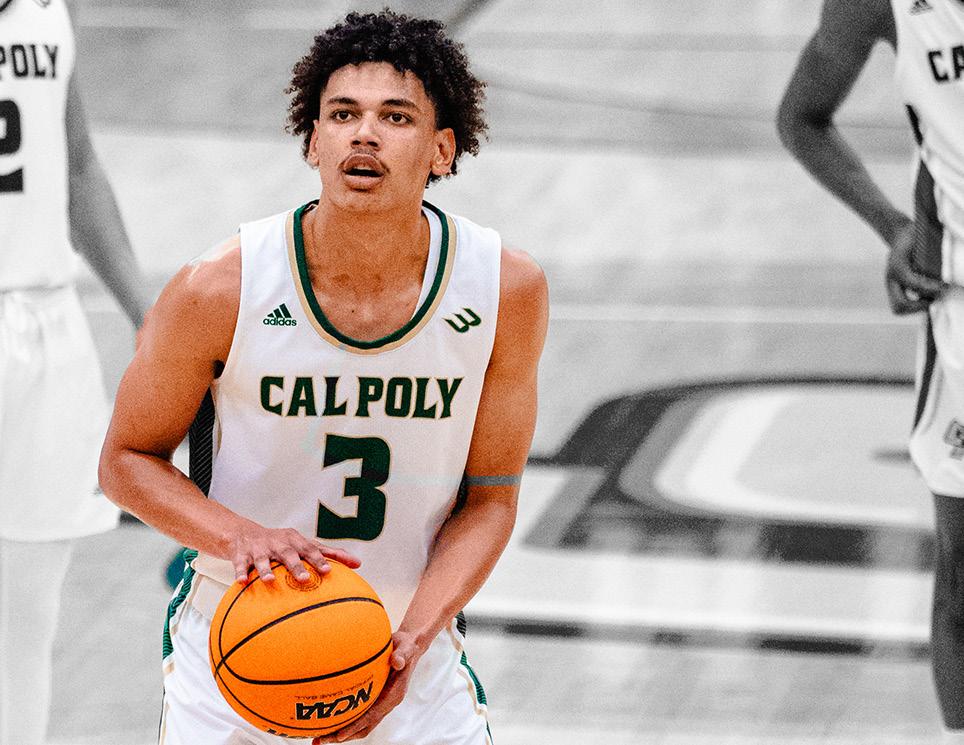


MUSTANG NEWS TUESDAY, APRIL 9, 2024 SPORTS 13 BRANDON BOMBERGER MUSTANG NEWS
A ‘chip on her shoulder’
How a torn ACL became Annika Shah’s defining moment
BY LAUREN EMO
Whether it was every weekend at the YMCA basketball court or in a small alleyway between condos, starting at the age of five, a little Annika Shah was out for hours, basketball in hand, alongside her father Bijal and brother Devan.
“I think part of those memories is somewhat of my ‘Why,’” Shah said. “That’s what created the love for the game because family is super important to me and that’s something that brought together my family.”
Shah’s father, Bijal, grew up in Chicago during the Michael Jordan era and fell in love with the sport, though he wasn’t allowed to participate in many extracurriculars, Shah said. So, he set out to ensure Shah and her brother did every extracurricular possible.
Shah played tennis, soccer, softball and did taekwondo, where she got her first-degree black belt. But she always found herself back on the basketball court.
From the time she started playing club basketball in second grade, her coaches moved her to play with boy’s teams.
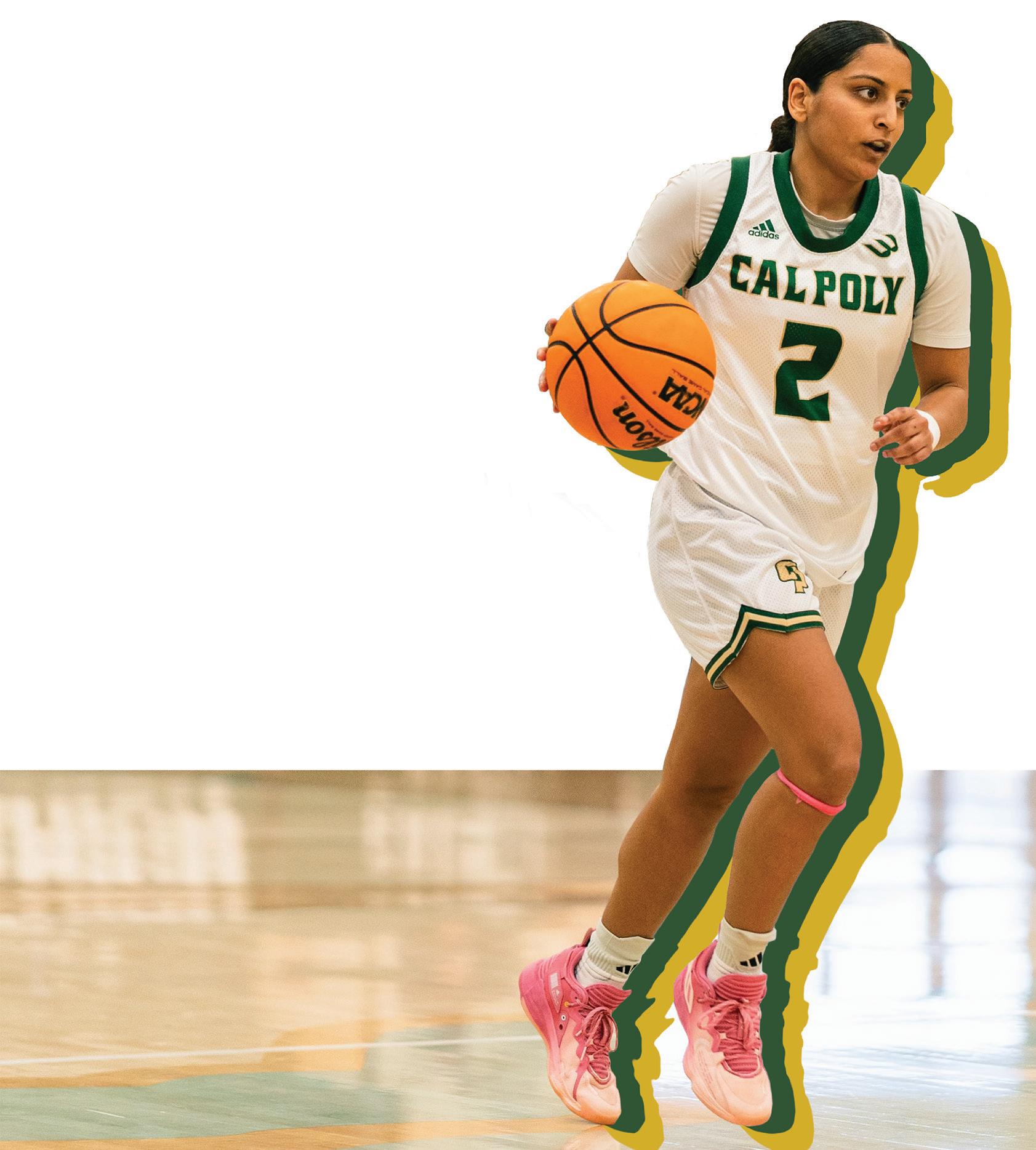
Shah said she attributes a lot of her grittiness and basketball knowledge to growing up playing with boys.
“Boys, they are taller than you, they’re stronger than you,” Shah said.
“It kind of built me into who I am today and separated myself.”
In high school, Shah, a 5 foot 3 point guard, began playing for an Adidas-sponsored AAU youth program, Peninsula Elite, where she said she felt she had been working harder than ever to get noticed.
“I just felt everyone else on my team was getting looked at and I wasn’t because of just who I am, and what I look like,” Shah said.
After Shah’s sophomore year club summer session, she was riding a high. She started to get noticed by some UC schools, Ivy League schools and some smaller schools.
A lot of times, I got overlooked because I’m small and not the most athletic.
ANNIKA SHAH
Women’s Basketball junior
She was named Central Coast Section Division 1 Most Valuable Player and became the only sophomore and public school athlete ever to make the California All-State Team, according to the Cal Poly Athletics website.
And then, as everything was falling into place, it quickly shifted for Shah.
SHAH’S “DEFINING MOMENT”
One day in the summer before her junior year, Shah decided to play in a tournament for her high school team, Palo Alto High School. Shah rarely played for her high school in
MUSTANG NEWS TUESDAY, APRIL 9, 2024 SPORTS 14
BRANDON BOMBERGER | MUSTANG NEWS

the summer due to her rigorous AAU basketball schedule.
After reaching for a pass from her teammate, the player guarding Shah ran right through her leg.
“It all happened so fast that I can’t really remember all the emotions that happened in that moment, but I do remember kind of just having a little bit of a panic moment,” Shah said.
She would later realize she ended up tearing her ACL and meniscus.
“That was my first major injury that I was like, ‘What is this?’ I don’t know how to sit out from basketball,” she said. “I don’t know what my life’s gonna be because it was so much basketball and then I had to not play for a year. I was kind of lost for a little bit.”
Determined to bounce back from
Shah eventually got up and walked to the bench, thinking she could still play. Then, a tingling sensation hit her leg.
her injury, Shah got surgery a month later and stayed on top of her physical therapy.
“We talk about this in our program a lot, that everybody has a defining moment,” Cal Poly Women’s Basketball coach Shanele Stires said. “I think Annika’s defining moment was that injury in high school.”
Nearing the end of her recovery, in March 2020, when the sport began to seem back in reach, the pandemic ceased all in-person basketball.
All of the universities that expressed interest in Shah prior to her injury and the pandemic never called her back, except for one: Cal Poly.
“Obviously, I just remember that moment, my parents were on Zoom with me and I was sitting in the middle and my dad’s about to tear up and my mom’s on the edge of her seat,” she said. “That was like a moment that I’ll never forget, just getting that first Division I offer and, you know, it happened to be my only Division I
Poly’s previous head coach Faith Mimnaugh, before she retired in 2022.
BECOMING A PIVOTAL PLAYER
Now, in her junior year at Cal Poly, Shah is leading the team in points, averaging 12.2 points as of Feb. 5 with significantly more attempts than any other player on the team, according to Cal Poly Athletics.

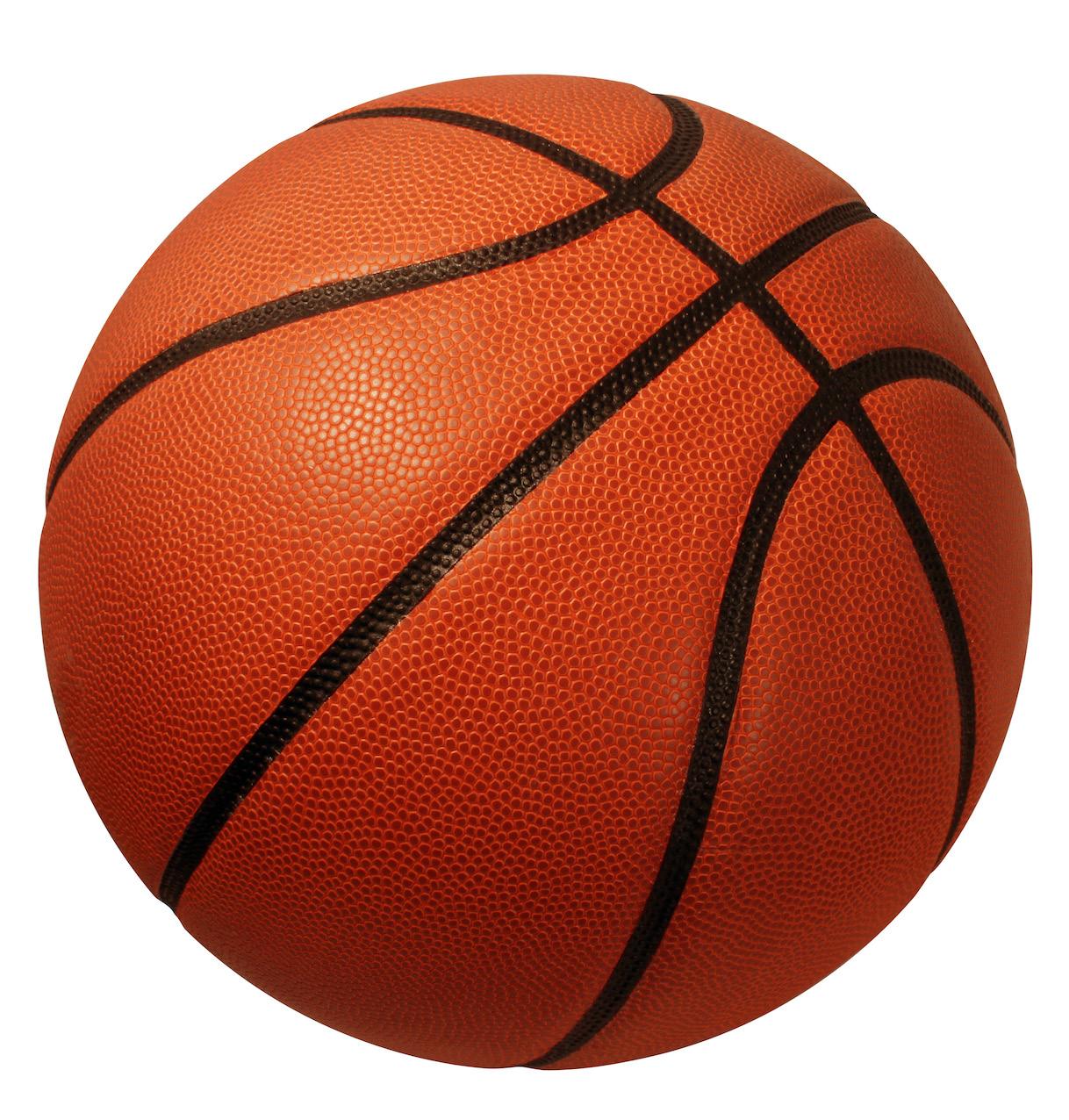
Shah was recruited by Cal
When Cal Poly switched over coaching staff, Stires noticed that Shah immediately bought into the coaching staff’s message, she said.
“She was so passionate about, you know, turning this program into a winning program and so she’s just somebody that we’ve really anchored on and really relied upon to start building this program into a championship level one,” Stires said.
Junior forward Sydney Bourland and current roommate of Shah, said that she leads the team by connecting with players on a deep level and building their trust. Stires called her a voice the team “looks to and rallies around.”
“I just think she’s a great example of what I think what passion and hard work and dedication and determination can do,” Stires said. “And I think her basketball career is a living testament to that and it’s very inspirational.”
MUSTANG NEWS TUESDAY, APRIL 9, 2024 SPORTS 15
BRANDON BOMBERGER | MUSTANG NEWS
How Cal Poly’s Empowering Autistic Scholars program fills an important educational gap
BY EMMY SCHERER
“I want to go to college at Cal Poly so that I can work with you,” Luna Larsen’s 6-year-old son, Nate, said to her one day.
Larsen, the Liberal Arts and Engineering Studies (LAES) program coordinator at Cal Poly and current grad student at San Jose State University, was filled with joy at the idea of her little boy attending Cal Poly alongside her.
At the same time, though, she knew that dream wasn’t likely. Her son has autism and, according to Larsen, large institutions like Cal Poly aren’t ready for students who have specific support needs.
As a person with autism herself, Larsen understood the struggle of navigating higher education with a disability. She recalled feeling like an imposter while pursuing her undergrad degree at the University of Southern California.
“I was afraid to ask questions because I thought, ‘Oh, if they know I’m struggling, they’re going to kick me out because they’re going to be like, ‘you don’t belong here,’” Larsen said.
Larsen said her undergrad experience inspired her to work in higher education and help college students with autism specifically.
“I wanted to give them the support and care that I hadn’t received,” Larsen said.
So, in 2022, Larsen created the Empowering Autistic Scholars Mentoring & Research Training Program at Cal Poly, better known as the EAS program, to provide support
and community for students with autism.
According to Larsen, autism is “a neurodevelopmental difference that affects how people think, move, interact, sense and process information.”
Eva Voss, a biochemistry sophomore and student mentor in the EAS program, said that autism is “different for everyone.”
“In reality, it’s a very wide spectrum,” Voss said.
the EAS program seeks to provide a variety of resources for autistic students, including peer support, mentorship, research experience, and a place for autistic people to feel safe and “where they can be themselves without having to mask and pretend they’re someone they’re not.”
Voss said the program offers one-on-one student mentorship, connecting students with other Cal Poly students who can provide support and advice. This mentorship can take the form of casual coffee meetups or simply checking in via text message. Ian Schaub, a mentor in the program, said that mentors and mentees meet for around two hours a week.
Having this program helps students know, ‘Hey, you have a safe place here.’
EVA VOSS
Biochemistry sophomore & student mentor in the EAS Program
Voss added that autism is often misunderstood and stigmatized, especially in academic settings.
“We’re just like you,” Voss said, “Just because we’re born differently with our brains altered doesn’t mean we’re different people.”
Larsen said she designed the EAS program to complement accommodations for students already offered by Cal Poly’s Disability Resource Center (DRC) but address the gaps where autism-specific needs may be overlooked.
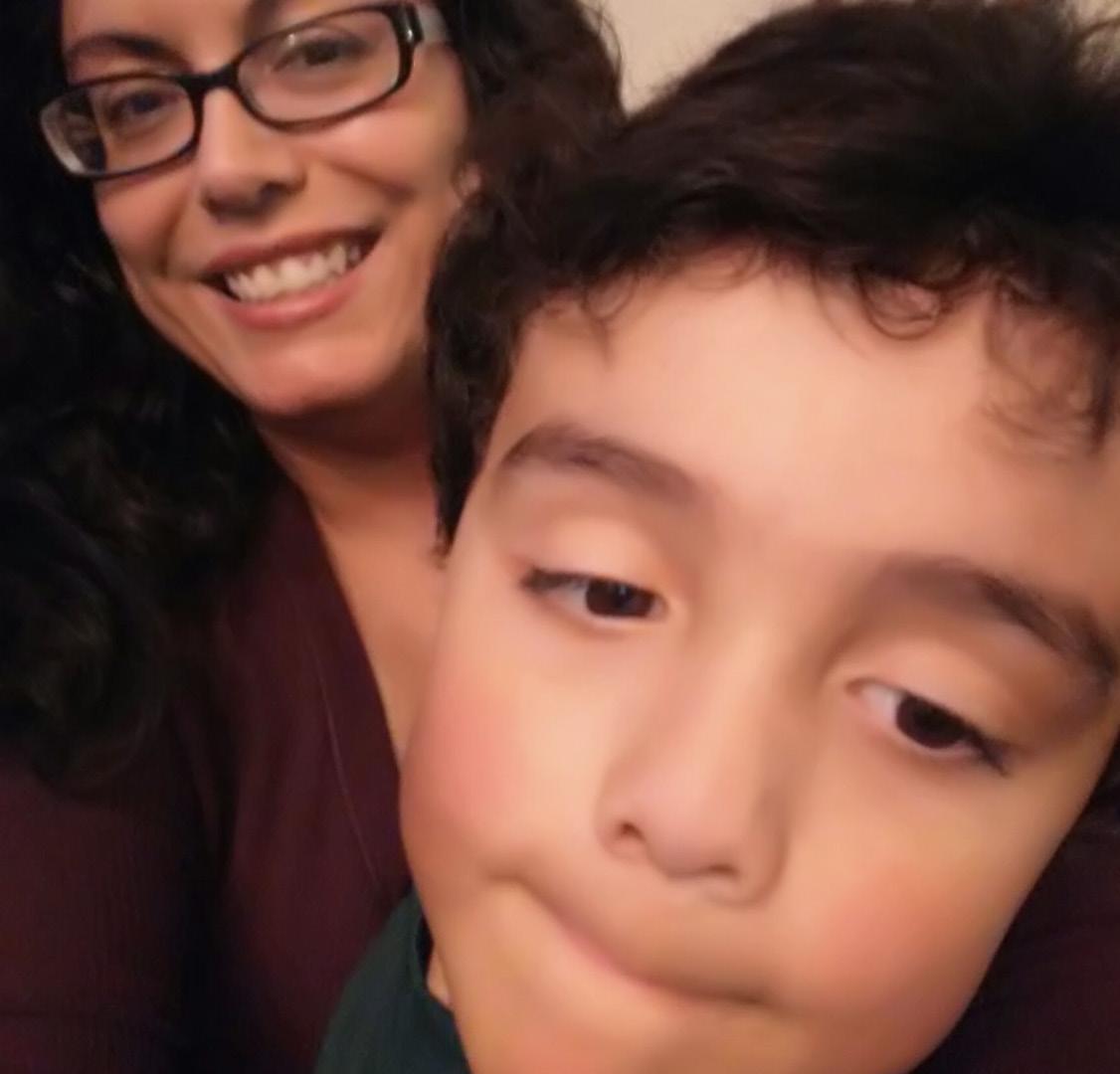
The DRC offers various academic accommodations for autistic students, but these are done confidentially and individually, Voss said. While important for privacy, this limits the DRC’s ability to build community among autistic students.
According to Larsen,
The program also puts on a number of events for students, both formal and informal. According to Larsen, the events include book clubs, exercise groups, magazine classes and study halls, among other group activities.
Another facet of the program is its research projects, where student research assistants are gaining realworld experience and simultaneously do research related to autism, according to Larsen. The current research project is focused on evaluating the success of the mentor/ mentee program, according to EAS program and research assistant Max Hofer.
“Because the actual people we are studying are the people creating and running the experiment, it’s a much more valid form of research,” Hofer said.
The EAS program also seeks to address the disproportionate unemployment rate autistic people face through free academic and professional coaching, as, according to Larsen, only 15% percent of autistic people are fully employed.
The program is still in its beginning stages, though, as there are currently only eight mentees and 12 mentors and research/program assistants, according to Larsen. She said the program hopes to expand to include more areas of neurodivergence in the coming years.
However, Larsen said the grant funding that supports the program expires this year. The grant allows the EAS program to expand its research
and pay student researchers for their time.
“We’re still trying to get more people involved,” Hofer said, “I hope to see more good things from the program and a lot more growth.”
Hofer said that people in the EAS program do not need a diagnosis to join and that students can choose whether or not to disclose any diagnosis. Students interested in learning
more about the EAS program or joining the community can find details and resources on the program’s website.
“Having this program helps students know, ‘Hey, you have a safe place here,’” Voss said, “We’re empowering scholars who are autistic to make them feel safe and not in the shadows.”


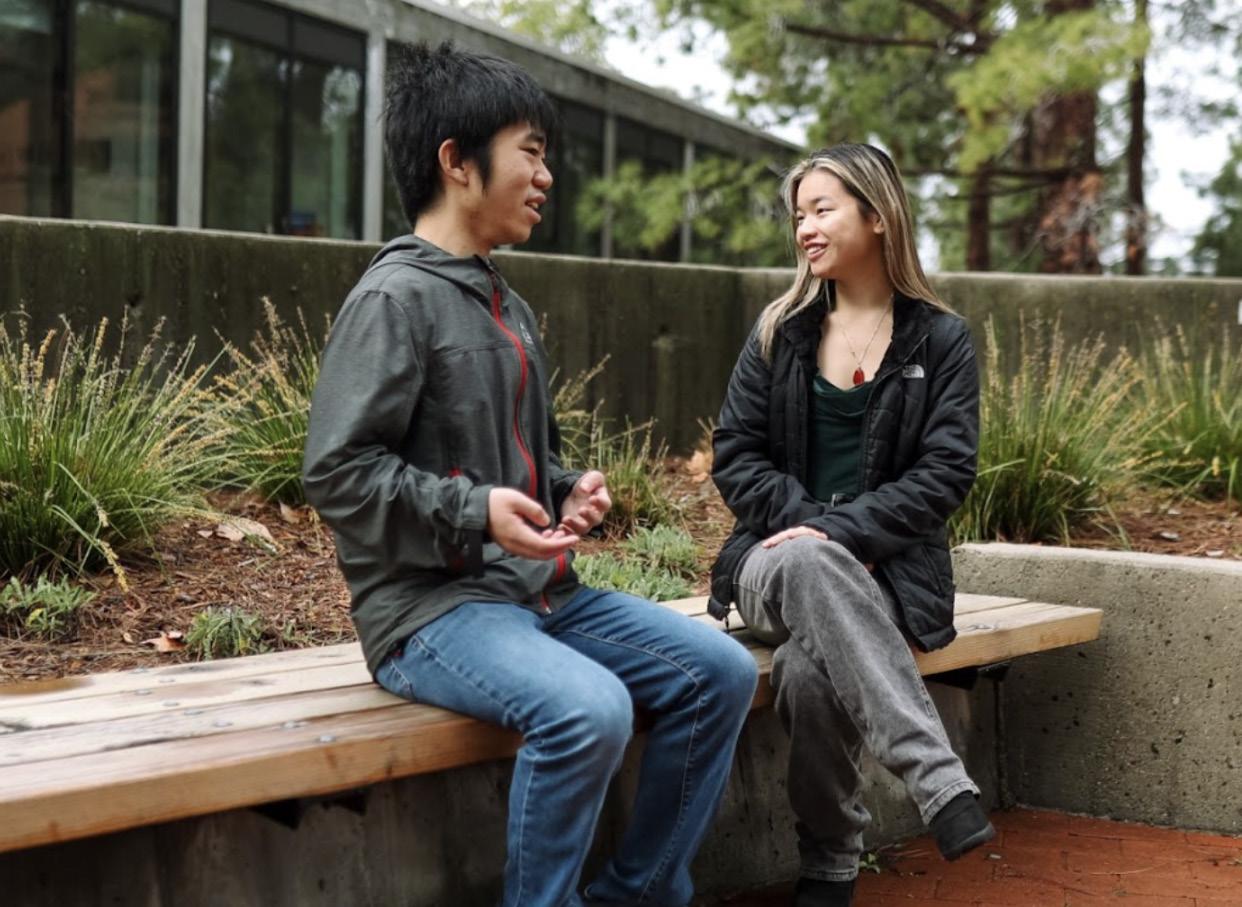
MUSTANG NEWS TUESDAY, APRIL 9, 2023 FEATURES 16
EAS program members Eva Voss and Brian Lau.
Eva Voss in a research lab in the Warren J. Baker Center (building 180).
COURTESY EAS program director Luna Larsen and her son, Nate Larsen.
EMMY SCHERER | MUSTANG NEWS EAS program members Eva Voss, Max Hofer, and Ryan del Rosario.





• Live Music! • Family Activities!
• Food Trucks! • Free Ice Cream!
Since 1984, this one-of-a-kind program has made a positive impact on our community—growing plants and people. We have provided employment and vocational training to over 2,000 adults living with the challenges of mental illness and have become one of the top regional suppliers of droughttolerant landscape plants. There is so much to celebrate— we have a big party planned and you are all invited!

Questions? Call Michael at (805) 540-6513
Saturday, April 20
NO PARKING ONSITE
Park at SLO Naz Church, 3396 Johnson Avenue, and take our shuttle around the corner to the party.
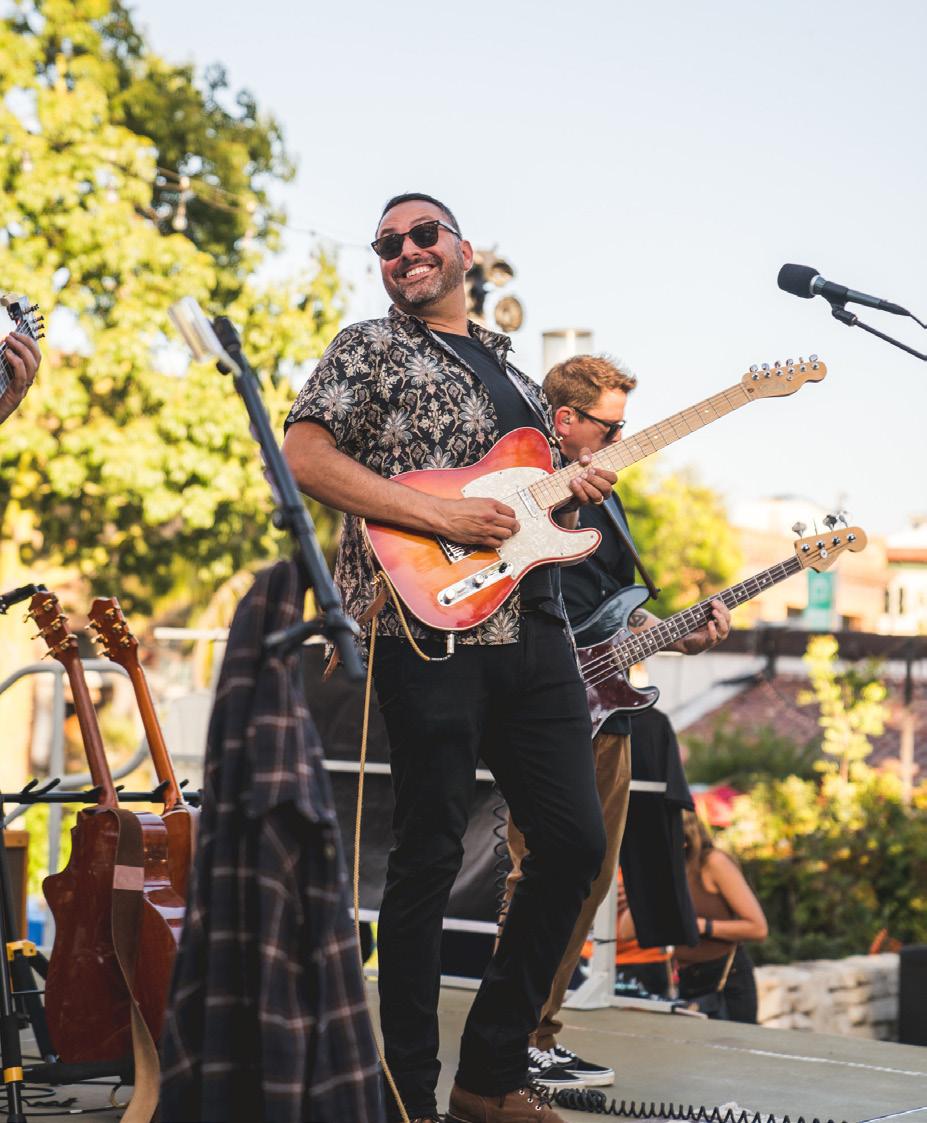
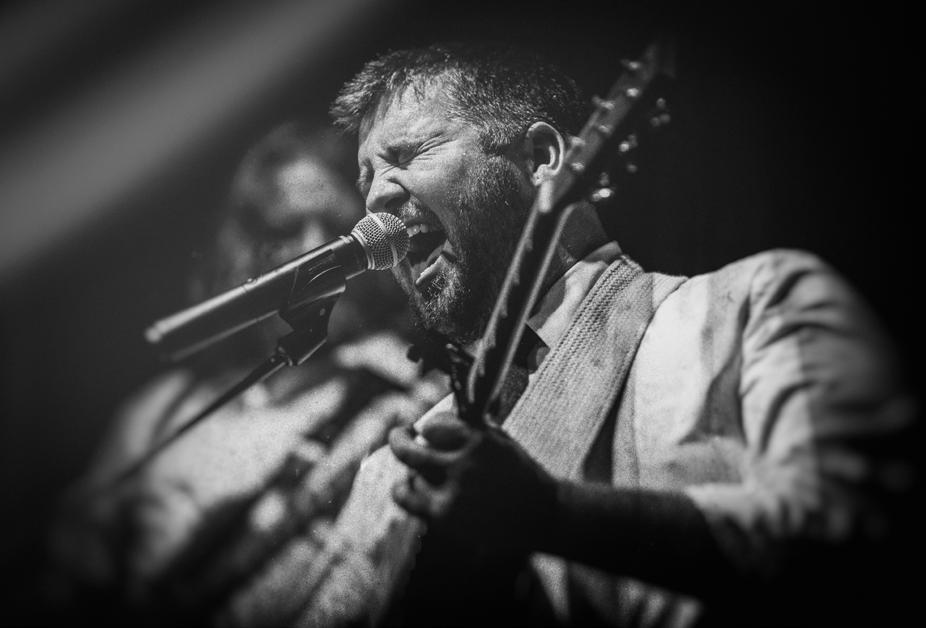
Thanks to our Lead Sponsor


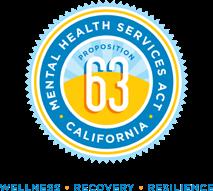
Carbon City Lights Moonshiner Collective
12:00–5:00pm FREE TO THE PUBLIC COME CELEBRATE WITH US GROWING GROUNDS TURNS 40!



$10 off your next 10 meals Terms apply. Offer expires 05/31/24. Taxes and fees still apply. Limited to $10 off next 10 orders, $25 minimum basket. Exclusions may apply. See app for details. ORDER NOW
Use promo code: college24eats
















































































